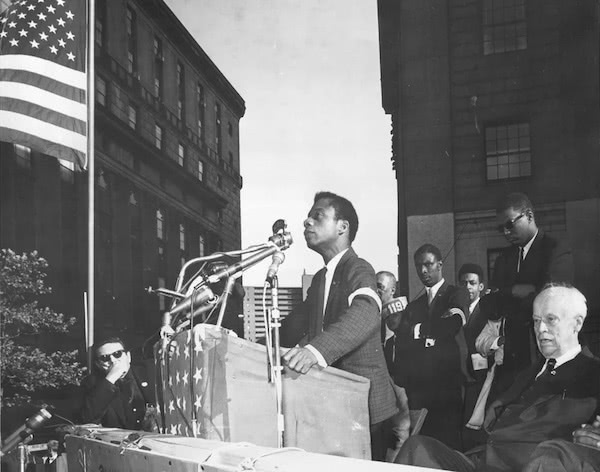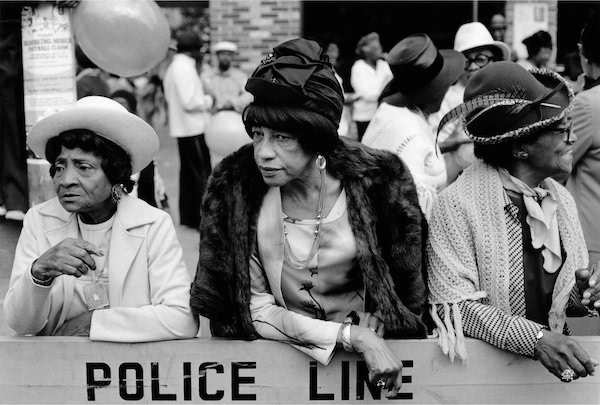James Baldwin’s Shadow

NPR’s Throughline reprises an insightful interview with author and Princeton professor Eddie Glaude.
Glaude makes for the perfect guest for this conversation. His reverence for Baldwin is palpable.
ARABLOUEI: In the book, you kind of refer to this notion that there’s a kind of lie at the center of America’s self-image. And it’s something that comes out in your voice and also in the kind of - Baldwin’s observations. What is that lie? And what - how does it apply today?
GLAUDE: Yeah. So the lie is what I call the value gap. And that is the belief that white people matter more than others. And that belief evidences itself in our dispositions, our habits, our practices, our social and political and economic arrangements. And they’re protected by the lies we tell ourselves.
In Nation’s Incarceration Capital, a New D.A. Is Freeing People From Prison
Katie Jane Fernelius, reporting for The Appeal:
Since he entered office in January, [Jason] Williams has rolled out sweeping changes. He has granted new trials to nearly two dozen people convicted by split juries, announced he would no longer oppose parole applications, dropped his predecessor’s efforts to maintain life without parole sentences for people convicted when they were minors, and moved to secure the release of multiple wrongfully convicted people.
“There are innocent people in jail,” said Williams, who was elected in 2020 on a progressive platform. “There are people in jail for sentences that are far longer than they should be. … There are people who got convicted without a fair trial.”
Hollywood’s Anti-Black Bias Costs It $10 Billion a Year
Film producer Franklin Leonard in a New York Times opinion piece:
For anyone who may absorb that data and conclude that the lack of diversity in film and television, while unfortunate, isn’t an important societal concern, a history lesson is crucial: Even during the Civil War, the abolitionist and orator Frederick Douglass argued often for the vital importance of imagery and the narratives they create in fostering a pluralistic society.
Through sheer force of will, Douglass — born a slave in Talbot County, Md., in 1818 — made himself the most photographed American of the 19th century, partly driven by a belief that his now-iconic image, when paired with rhetoric, could debunk prevalent representations of Black people in his time as caricatures and nonhuman specimens. It was a campaign he shouldn’t have had to wage in the first place, but was also one that, as the Douglass biographer and Yale historian David Blight has explained, won over many ambivalent whites.
Black Lives Are Shorter in Chicago. My Family’s History Shows Why.
The subtitle here is “How did a Promised Land to generations of Black families become a community of lost lives?”
Linda Villarosa, writing for the New York Times Magazine:
Englewood — near the middle of the country’s third-largest city — reminded me of the rural Mississippi my grandmother and her siblings left behind for safety and greater opportunities nearly a hundred years ago during the Great Migration. But it is Chicago, not the rural South, that has the country’s widest racial gap in life expectancy: In the Streeterville neighborhood, nine miles north, which is 73 percent white, residents live, on average, to 90 years old; in Englewood, where nearly 95 percent of residents are Black, people live to an average of only 60.
Compare and contrast with last week’s essay on the disparties between the wellbeing of Black and white Minnesotans.
When Blackness Is a Superpower
Veronica Chambers for the Times:
Last year, DC Comics revived a character named Nubia, a Black Amazon who was raised alongside Wonder Woman and who first appeared in the comics in 1973. This new incarnation of Nubia is 17, has two mothers and, when she tries to save the day, she’s profiled and detained by the police. The young adult graphic novel, written by the author L.L. McKinney with art by Robyn Smith, states its intention to answer the question: “Can you be a hero … if society doesn’t see you as a person?”
What a question that is.
A common theme threaded throughout all these Black superhero narratives is the way that society questions the worthiness of African-Americans. What the creators and characters you’ll read about in this package underscore is that the arc of Black superheroes is anchored by a continuing need to portray the humanity of Black people in an ongoing quest for justice and equality.
Inside photographer Dawoud Bey’s retrospective at the Whitney Museum

Tausif Noor, writing for the Times:
Bey recognized that though a picture may seem like a static record, by looking carefully and with intention, a photographer could illuminate more than what was visible in the frame and clue viewers to histories hidden beneath the surface. “The present never completely supplants the past,” the artist noted in an interview in Aperture last December. “History doesn’t implode, it expands.”
Thanks for reading. See you next week.
